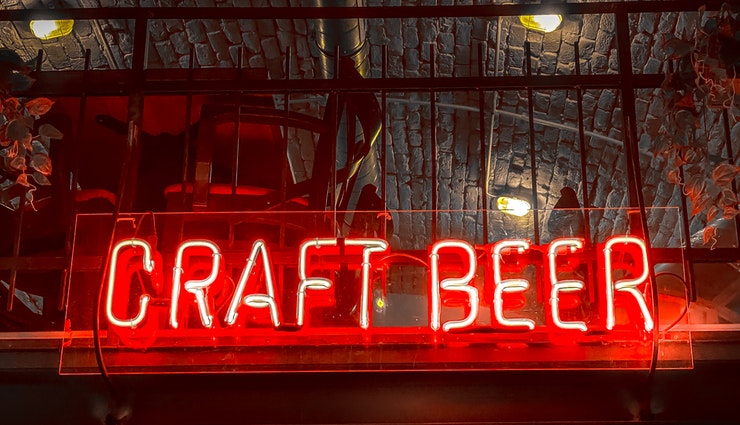If you’ve ever wondered how Neon Mama neon signs for sale are made, then you’re not alone. These brilliant lights are made from small glass tubes. They are custom-made to a certain shape, color, and size. This process involves using a hot ribbon to bend the glass tubes into the desired shape. Then, it’s repeated again until the desired shape is achieved. The end result is a stunning neon sign.
Lead Glass
Lead glass is soft and can be easily shaped, but it contains up to 21% lead oxide, which is considered a hazardous waste by some municipalities. To combat this problem, two leading companies, Philips and OSRAM, joined forces and created a glass with similar melting and sealing properties to lead glass. These new glass types are sold under different names and are replacing lead glass in many lighting and sign industries. In this article, we will look at the pros and cons of lead glass and the alternatives.
Among the materials used in neon signs, lead glass is the most common. The tubes used for neon signs are between eight and fifteen millimeters in diameter, and the gases inside the tubes are heated in portions using burners. The burners are fueled by a mixture of natural gas, butane, or propane, and work by supplying an electrical charge to the neon. Lead glass electrodes are embedded in the glass and are connected to a small metal shell by two wires that run through the glass.
The lead glass is made by pouring a solution of lead into a small glass tubing. This solution can be used to make letters or scripts. For smaller neon signs, a small hand torch is used to heat the tubes. The tubes are bent by people who do not wear gloves, as they feel the heat transfer and softening of the glass. Then, they are attached to a flexible hose to prevent them from collapsing.
Argon
Neon and argon are inert gases, and argon and neon signs use a combination of these two gases. While neon is the primary gas, argon is used in most signs to create reds, oranges, and blues. Other gases, such as xenon and krypton, are sometimes used to create special effects. Red neon comes from a hundred-percent argon gas. Clear glass is required for this color.
These gases are used in decorative gas lighting because they emit distinctive colors when excited by an electric current. When mixed with mercury or other substances, they give off distinct colors. Different gases give off different colors, and the added components are vaporized during the startup process. Argon is the most widely used gas for neon signs. However, it’s not a viable substitute for tungsten. While argon can produce multicolored neon lights, fluorescent lighting is not a true neon sign.
The process of making neon signs involves heating several glass tubing sections. Larger signs are usually constructed from several sections, which are eight to ten feet long. Two lengths of glass tubing are fused together at the ends, and an electrode is attached to one end. The tubing then contains two wires, one open and one closed. A vacuum pump is used to remove the gas from the tubes. If a sign maker decides to produce a neon sign in this way, the process is not very complicated and can be viewed by a general audience.
Xenon

The process of manufacturing Xenon signs involves bending a thin tube into shape. Its electrodes are then attached and a small vacuum is placed inside the tube. The resulting tube then fills with gas. This gas then produces light. During manufacturing, it is important to keep impurities and air out of the tube. After this, it is then tested for safety. Depending on the size and type of neon sign, the production process can take a few hours.
Most Xenon signs use several sections of glass tubing, with a length of eight to 10 feet per section. Each section is heated to melt the electrodes and then fused together. Then, the tube is fitted with a tubulation port to allow the gas to escape using a vacuum pump. A tube may be integrated with the electrode or be a separate piece. It is important to note that the neon sign’s overall size may differ from the actual size of the neon tubes.
After George Claude first invented the Xenon sign in 1912, it soon became popular. Soon, other businesses wanted to advertise their products or services using neon signs. The company formed Claude Neon, which sold neon sign franchises. Today, neon signs are the most widely used type of advertising in the world. They are incredibly durable, making them a great investment for any business. If you are interested in learning more about this method, read on.
Krypton
When making neon signs, krypton is a key ingredient. Unlike neon, which contains many toxic ingredients, krypton is non-toxic and safe. It is packed in strong glass bulbs and steel canisters under high pressure. Because it is non-flammable, non-explosive, and non-toxic, krypton is also easy to transport. It can be safely shipped across the world in specialized shipping containers.
In addition to making neon signs, krypton is also used for lighting. It gives off a yellow-white glow that can vary in color, depending on the amount of colored glass used. This gas is also used for airport runways and safety lighting. Although it is relatively expensive, krypton is the standard gas for airport runway lighting and safety signage. This article will explore the various ways in which krypton is used in neon signs.
The gas Krypton is a rare atmospheric gas. It makes up a small fraction of the atmosphere and is used in certain types of light bulbs. In contrast, argon is used for strobe lights, which produce extremely short bursts of light. It is also used in medical applications. There is also a link between krypton and neon. It is used in neon signs to make them look realistic.
Helium
Most of the large neon signs are made of a series of sections of glass tubing, each of a certain length, eight to ten feet in diameter. Two ends of the tubing are fused with electrodes, and the rest of the tube is emptied with a vacuum pump. The resulting neon sign will be illuminated. Helium is one of the most difficult gases to procure, but it’s the most commonly used gas for neon signs.
While helium doesn’t combine with any other chemical, it can force a reaction by passing a voltage through it. The electricity excites the gaseous atoms and destabilizes them, releasing photons. These photons are then emitted by the neon sign. This phenomenon is known as a’sunshine effect’. However, neon signs don’t produce light directly – they emit light instead.
The gas that produces a pinkish-red glow is helium. It is also rarer than argon and neon and is used in gas-discharge lamps. Helium is typically found naturally in natural gas deposits. While helium is the most common gas in neon signs, other gases are also commonly used. Helium is one of the noble gases, which emits a specific color when electricity passes through them. In addition to helium, other noble gases can also be mixed with neon to produce a corresponding color. For example, green is created by mixing argon with green fluorescent coating.
Other Gases Used in Neon Signs
While the luminous properties of neon are attributed to a complex chemical reaction, you might have trouble imagining how it is produced. However, the brilliant colors of neon lights are easily recreated by adding other gases. To make neon signs, you can experiment with different gases, and even add new colors. In addition, you can purify the gases for use in neon signs yourself. You can also contact a neon sign manufacturer for advice.
While neon is strictly orange-red, the other gases used in neon signs are not pure gases. The gas argon is the most commonly used in neon signs, and helium is a specialty item used in gas-discharge lamps. Both of these gases are rare, but most helium is produced naturally through radioactive decay or is found in natural gas deposits. Argon, meanwhile, produces a pale lavender glow. Radon is the only noble gas that does not react with electricity.
Neo is a chemical element found naturally in small quantities in the air. It is not toxic, does not burn, and has no taste. During the nineteenth century, British chemists William Ramsay and Morris W. Travers discovered the gas and learned to extract it from the atmosphere. These scientists then used the gases to create electric signs. Neon is a reddish-orange gas, but other gases are used to produce other colors.
Manual process
Neon signs are not easy to make, but you can do them yourself! You’ll need a neon light maker, some wire, and a pen to create your own signs. This DIY process will take some time and patience, but the end result is worth it. You’ll be able to display your creativity for many years to come! Here are some tips to help you make your own neon signs! Just follow the directions below!
First, you’ll need glass tubing. This can be either soft or firm, and it can vary in diameter from 0.3 inches to 1.0 inches. Neon signs typically come in lengths of four to five feet. Each section of the neon sign’s glass tubing has a number of electrodes, or electrical conductors, made of very pure iron. The electrodes are enclosed in a cylindrical glass jacket. They’re attached to a wire and pass through a hole in the closed end. Once the tube is heated, the open end is removed, and the neon sign is complete.
A neon sign is an extremely versatile product. It can be used indoors or outdoors. They withstand all types of weather. They can be mounted anywhere and can be attached to a number of rigid surfaces. When choosing where to mount your sign, make sure you ask the manufacturer what kind of mounting options they offer. You’ll be happy you did! A neon sign can make your business stand out! So get creative and make a statement!

